
Journal of Religion Media and Digital Culture
Scope & Guideline
Advancing Scholarship in Digital Religious Practices
Introduction
Aims and Scopes
- Intersections of Religion and Digital Media:
The journal focuses on how digital media platforms transform religious practices, identities, and communities, examining the implications of these changes in various cultural contexts. - Cultural Representations of Religion:
It analyzes media portrayals of different religions, exploring themes such as representation, authority, and authenticity within religious narratives in both mainstream and alternative media. - Impact of Technology on Religious Practices:
The journal investigates how technological advancements, such as social media and streaming platforms, affect religious rituals, community engagement, and the dissemination of religious content. - Religious Responses to Societal Issues:
It explores how religious communities respond to contemporary societal issues, including health crises, social justice movements, and cultural shifts, through digital means. - Global Perspectives on Religion and Media:
The journal emphasizes a global approach, offering insights into how various cultures interpret and engage with religion and media, thereby enriching the discourse on digital religion.
Trending and Emerging
- Digital Communities and Identity Formation:
Recent publications emphasize the formation of digital communities, particularly among younger audiences, showcasing how identity is negotiated and expressed in online spaces. - Health, Religion, and Digital Media:
The intersection of health crises, such as the COVID-19 pandemic, with religious practices and digital engagement has gained traction, reflecting the need for studies on how faith communities adapt in times of crisis. - Cultural Appropriation and Religion in Digital Spaces:
Emerging discussions around cultural appropriation in religious contexts highlight the complexities of representation and identity in digital media, especially in relation to marginalized communities. - Psychological and Emotional Aspects of Digital Religion:
An increasing focus on the psychological and emotional dimensions of engaging with religion online, such as combating loneliness or fostering community, is becoming a significant area of inquiry. - Influence of Social Media Platforms on Faith Practices:
The role of platforms like TikTok and Instagram in shaping contemporary faith practices and youth engagement with religion is increasingly recognized, indicating a shift towards understanding digital culture's impact on spirituality.
Declining or Waning
- Traditional Religious Authority:
There is a noticeable decline in discussions surrounding traditional forms of religious authority, as more focus shifts towards grassroots movements and individual agency within digital contexts. - Static Representations of Religion:
The journal has seen a decrease in studies that focus solely on static or historical representations of religion in media, suggesting a shift towards more dynamic and interactive forms of engagement. - Mainstream Media's Role in Religion:
Research on the role of mainstream media in shaping religious narratives has diminished, potentially indicating a growing interest in alternative media and grassroots movements over traditional outlets. - Religious Extremism Narratives:
While previously a strong focus, discussions centered on religious extremism and its representation in media are becoming less frequent, possibly due to a broader exploration of nuanced religious identities. - Local vs. Global Religion Dynamics:
There seems to be a waning interest in strictly local religious dynamics, with a growing emphasis on global interconnectedness and transnational religious movements.
Similar Journals
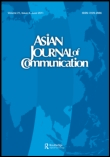
Asian Journal of Communication
Connecting Ideas, Cultures, and DisciplinesThe Asian Journal of Communication, published by Routledge Journals, Taylor & Francis Ltd, is a premier scholarly platform dedicated to advancing the field of communication studies. Established in 1990 and continuing its impactful publication journey through 2024, this esteemed journal caters to a broad spectrum of interdisciplinary research, addressing critical issues in communication, media, and education in an Asian context. With an impressive impact factor and ranked in the top quartiles in both Communication (Q1) and Education (Q2), the journal is recognized for its rigorous peer-review process and its commitment to quality scholarship. Researchers, professionals, and students can access invaluable insights and innovative research trends, helping to bridge gaps and foster understanding across diverse communication practices. The journal is accessible through institutional subscriptions and promotes global discourse, making it an essential resource for anyone engaged in the vibrant field of communication.

Journal of Religion and Popular Culture
Uncovering the Dynamic Interplay of Faith and PopularityJournal of Religion and Popular Culture is a unique academic platform dedicated to the exploration and analysis of the intricate relationships between religious practices and popular culture. Published by University of Toronto Press, Inc., this journal provides a critical forum for scholarly discourse, appealing to researchers, students, and professionals in the fields of Cultural Studies and Religious Studies. Since its inception in 2013, the journal has established itself as a significant contributor to the academic community, evidenced by its current category quartiles: Q4 in Cultural Studies and Q3 in Religious Studies as of 2023, alongside its Scopus rankings. Although it operates on a subscription basis, the journal's accessibility enhances its reach within the scholarly community. With a focus on fostering interdisciplinary dialogue, the Journal of Religion and Popular Culture invites contributions that illuminate the dynamic interplay between faith and the vibrant expressions of popular culture, making it a vital resource for understanding contemporary societal trends.
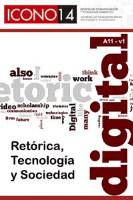
Revista Icono 14-Revista Cientifica de Comunicacion y Tecnologias
Fostering Innovation in the Digital Communication LandscapeRevista Icono 14 is a distinguished scientific journal dedicated to the fields of communication and technology, published by ICONO 14 since 2003. With its open access policy, the journal actively promotes the dissemination of research findings, making valuable knowledge accessible to researchers, professionals, and students worldwide. Based in Spain, the journal has established itself as a reputable source in its field, achieving a Q2 quartile ranking in communication and placing within the top 75th percentile among social sciences communication journals in the Scopus database. The journal serves as a platform for innovative research covering a wide scope of topics related to communication technologies, enabling scholars to explore advancements and challenges within the discipline. As it embarks on its converged years from 2018 to 2024, Revista Icono 14 stands as a vital resource for cutting-edge research that shapes the future of communication studies.

Religion and the Arts
Unveiling the Rich Tapestry of Faith Through Artistic LensesReligion and the Arts is a distinguished scholarly journal published by BRILL, based in the Netherlands, with a dedicated focus on the interdisciplinary exploration of religion and its interplay with various artistic expressions from historical and contemporary perspectives. Established in 1996, this journal serves as a vital platform for researchers, professionals, and students interested in Cultural Studies, History, Religious Studies, and the Visual and Performing Arts. Despite its current classification in the Q4 category across multiple fields, it remains committed to advancing academic discourse and fostering innovative approaches to understanding the complex relationships between spirituality and artistic creation. With its ISSN 1079-9265 and E-ISSN 1568-5292, the journal invites submissions that contribute to enriching this dynamic field, ensuring that a diverse range of voices and perspectives are represented. Although not an Open Access publication, the journal’s content continues to be pivotal for scholarly engagement and is essential reading for those dedicated to the study of art's profound connections with religious traditions.

Journal of Religion in Japan
Exploring the Spiritual Tapestry of JapanJournal of Religion in Japan, published by BRILL, is a premier academic journal that explores the multifaceted dimensions of religion within the context of Japan. With an ISSN of 2211-8330 and an E-ISSN of 2211-8349, this journal boasts a remarkable position in the field, holding a Q1 ranking in Religious Studies and a commendable 85th percentile ranking in Scopus, indicating its significant impact and recognition among scholars. Covering pivotal themes such as the interplay between tradition and modernity in Japanese religious practices, the journal serves as a critical resource for researchers, professionals, and students, providing in-depth analyses, cutting-edge research findings, and thoughtful discussions. The journal's availability from 2012 to 2024 showcases its commitment to continuous exploration and engagement in religious studies, offering invaluable insights into the dynamic landscape of religion in contemporary Japan.
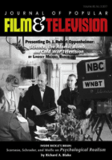
JOURNAL OF POPULAR FILM AND TELEVISION
Bridging Academic Inquiry and Popular Culture.JOURNAL OF POPULAR FILM AND TELEVISION, published by Routledge Journals, Taylor & Francis Ltd, stands as a significant platform for academic discourse in the realms of cultural studies, visual arts, and performing arts. With its ISSN: 0195-6051 and an evolving digital presence indicated by its E-ISSN: 1930-6458, the journal has carved out a respected niche since its inception in 1978, continuing to contribute to scholarly discussions through 2024. Its impact within the academic community is underscored by a Q3 ranking in Cultural Studies and a Q2 ranking in Visual Arts and Performing Arts for 2023, highlighting its relevance across diverse fields. Notably, with a Scopus ranking placing it in the 74th percentile among visual arts and performing arts journals, it serves as an essential reference point for researchers, professionals, and students committed to the critical examination of film and television. Although not an open-access journal, it provides valuable insights and analysis that enrich understanding of popular media's impact on society. The journal's location in the United States, with a headquarters in Abingdon, England, further affirms its international scope and influence.
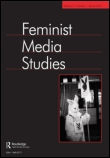
Feminist Media Studies
Shaping the Future of Feminist Media ScholarshipFeminist Media Studies is a leading academic journal published by Routledge Journals, Taylor & Francis Ltd, dedicated to the exploration and critical analysis of the intersections between media, gender, and feminism. With an ISSN of 1468-0777 and an E-ISSN of 1471-5902, this esteemed publication has established itself over its converged years from 2001 to 2024 as a pivotal platform for innovative research in the fields of communication, gender studies, and visual arts. Recognized for its excellence, the journal proudly ranks in the Q1 category in all three of its primary fields and is positioned in the top percentiles across various Scopus rankings. Although not open access, the journal provides crucial discourse that furthers an understanding of feminist perspectives in media, making it an invaluable resource for researchers, practitioners, and students alike. With its commitment to advancing knowledge and fostering dialogue, Feminist Media Studies continues to shape the terrain of feminist media scholarship.
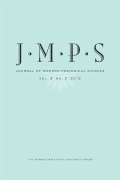
Journal of Modern Periodical Studies
Bridging Research and Creative Expression in Periodicals.Welcome to the Journal of Modern Periodical Studies, an esteemed publication from Penn State University Press, dedicated to the exploration and analysis of contemporary trends in periodicals. Established in 2010, this journal serves as a vital platform for researchers, professionals, and students engaged in the fields of Communication, Visual Arts, and Performing Arts. Despite its current Q4 ranking in Communication and Q3 in Visual Arts and Performing Arts, the Journal continues to foster critical discourse and innovative scholarship, making it a significant contributor to our understanding of periodical studies. Our commitment to quality and accessibility ensures that the latest research findings are disseminated effectively, although we currently do not offer open access options. As we move into an era increasingly dominated by digital media, our focus remains on inspiring comprehensive analysis and creative expression within the modern landscape of periodicals. Join us in discovering new narratives and scholarly insights that shape the future of this dynamic field.

European Journal of Media Art and Photography
Advancing Visual Narratives through Innovative Scholarship.The European Journal of Media Art and Photography (ISSN: 1339-4940), published by UNIV SS CYRIL & METHODIUS TRNAVA, serves as a vital platform for innovative scholarship in the intersection of media, art, and photography. With a focus on contemporary practices and theoretical explorations, this journal aims to advance discourse within these dynamic fields, attracting researchers, practitioners, and students alike. By providing a forum for original research papers, critical essays, and groundbreaking projects, it promotes the exchange of ideas that can influence future trends in art and visual culture. Although specific metrics such as impact factor and H-index are not available, the journal is committed to upholding rigorous academic standards and fostering accessibility in research while encouraging submissions that push the boundaries of traditional media and artistic expression. Located in Slovakia, the journal invites engaging contributions that critically examine the role of media in shaping visual narratives today.
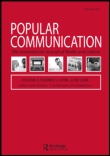
Popular Communication
Connecting Research with Contemporary Communication PracticesPopular Communication, published by Routledge Journals, Taylor & Francis Ltd, is a leading academic journal in the field of Communication, recognized for its Q1 ranking in the 2023 Scopus category. With an ISSN of 1540-5702 and an E-ISSN of 1540-5710, this journal has been converging significant research from 2010 to 2024, highlighting contemporary trends and evolving dynamics in popular communication practices. The journal is based in the United Kingdom and focuses on the intersection of media, culture, and communication, making it a vital resource for researchers, professionals, and students interested in understanding the impact of communication in society today. Although it does not offer Open Access options, it remains a cornerstone for scholarly discourse, with an impressive rank of #96 out of 511 in Social Sciences Communication, placing it in the 81st percentile. Contributions to this journal play a critical role in advancing knowledge and encouraging further scholarship in the diverse realm of popular communication.